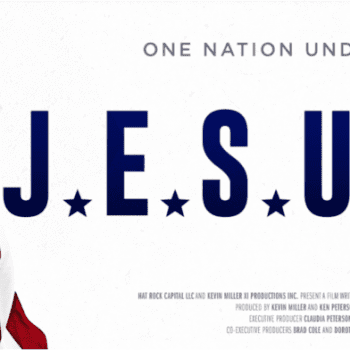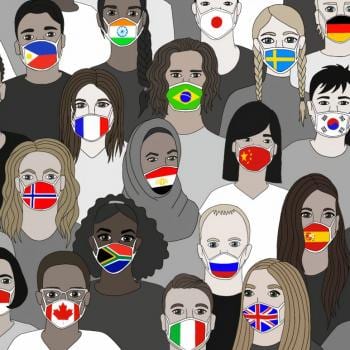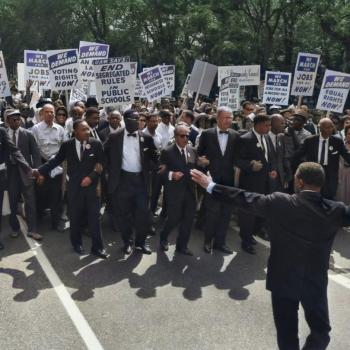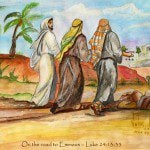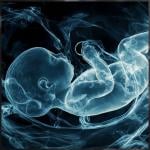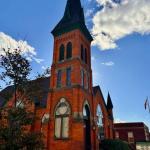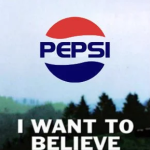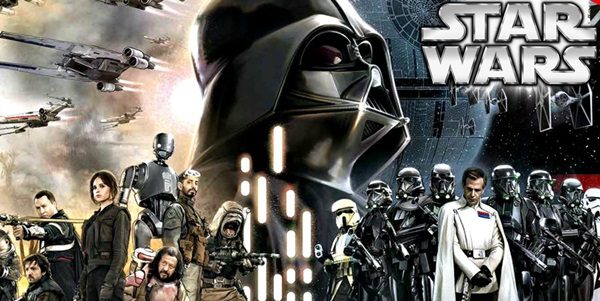 (Warning: Minor spoilers ahead. But don’t be afraid. The Force is with you.)
(Warning: Minor spoilers ahead. But don’t be afraid. The Force is with you.)
My eight-year-old son summed up Rogue One with this insightful comment, “So, there was this big war and then everybody dies.”
Rogue One was one of the darkest movies in the Star Wars franchise. Anyone who has seen A New Hope won’t be surprised by my son’s comment – the main characters do die. Despite the fact that I knew they were going to die, I grew to love the characters. Their struggles were relatable. In a universe of the Force, lightsabers, and aliens, this was a remarkably human movie. In my view, Rogue One was the most realistic Star Wars film. That’s why it was also the darkest Star Wars film.*
The Empire, Darkness, and Peace
So, you know the Empire is evil, right? I hope I didn’t give away any spoilers there … but there’s an interesting line in the beginning of the movie that caught my attention. Imperial Commander Orson Krenic is in charge of completing the Death Star. The Empire held their destructive plans for the Death Star in secret. Galen Erso was the main scientist behind the Death Star. He defected when he discovered the Empire’s plans to use the super weapon for violence.
Without their main scientist, the plans for the Death Star were stalled. Krenic searched throughout the galaxy for Erso. He found Erso, his wife, and his daughter Jyn, years later hiding on an isolated planet. Coming face to face with Erso, and backed by intimidating Death Troopers, Krenic implored him to complete the Death Star. Krenic explains the need with surprising logic:
Krenic – We are on the verge of greatness. We were this close to providing peace and security to the galaxy.
Erso – You are confusing peace with terror.
Krenic – Well, you have to start somewhere.
Krenic reasons with Erso that the Empire’s main goal in creating the Death Star is “peace and security.” I’m tempted to be cynical about Krenic’s claim. After all, in the Star Wars universe good and evil are usually easy to distinguish. The evil Empire is not interested in “peace and security.” It’s only interested in power and oppression, right?
Maybe not. Rogue One is such a dark movie because it reflects to us our own humanity. As much as I’d like to believe that good and evil are easily distinguished in the real world, we are not much different from Krenic. How often do we confuse peace with terror? Look at the “War on Terror.” American drones are essentially little Death Stars, killing innocent civilians in the name of “peace.”
Human wars are always premised on the logic that if we kill our enemies, the world will be a more peaceful place. “Collateral damage” is a necessary evil for the greater good of peace. That’s the logic of Krenic. And truth be told, when it comes to violence, it’s our logic, too.
The Rebellion, Darkness, and Peace
Now, you know the Rebellion is good, right? They stand against the Empire in the name of justice and peace. They are the true fighters for “peace and security.”
Well, maybe not. Rogue One gets even darker because of its portrayal of the Rebellion. The Rebellion has a similar logic of violence as the Empire. Without giving away too much more, in one scene the main Rebel fighter confesses,
All of us have done many things for the Rebellion, and some of those were – and still are – unforgivable. Those ones we always regret.
Rogue One is dark because it reveals that the Rebellion is not a paragon of goodness we thought it was. Like the Empire, the Rebellion rationalizes violence for a higher purpose. It orders soldiers to commit “unforgivable” acts of violence in the name of a greater good. But that greater good is corrupted by the means of violence.
Rogue One shows that violence makes the Empire and the Rebellion similar. The anthropologist René Girard claims that violence washes away distinction of good and evil, making us and our enemies into twins. He wrote in his book Violence and the Sacred, “… evil and the violent measures taken to combat evil are essentially the same.”
Rogue One is dark because it reveals the truth of our own human darkness. We always justify violence in the name of a greater good – “peace and security,” as Krenic stated. The truth when it comes to violence is that we can’t divide the world into good guys and bad guys. When it comes to violence, there are only people in need of forgiveness.
Christmas and a Greater Hope
The major theme throughout Rogue One is hope. That hope is finally realized in Return of the Jedi, when a son’s nonviolent love for his father brings repentance and reconciliation. But it’s interesting that Rogue One was released during Christmas, the season of hope for Christians. The prophet Isaiah is highlighted during the Christmas season. During Christmas Eve services, churches throughout the world will read this passage from Isaiah,
The people who walked in darkness have seen a great light;
Those who lived in a land of deep darkness—on them light has shined.
Isaiah’s hope was not in the darkness of violence, but in a reality where swords are turned into plowshares, spears into pruning hooks, and nations will stop learning how to conduct war.
Jesus lived the words of Isaiah, saying that those who live by the sword die by the sword. And he revealed the nonviolent force that is God’s love. It’s a force that flows throughout the entire universe. The good news is that this force of love seeks to forgive all, even those who think they have committed the unforgivable.
*With the possible exception of Empire Strikes Back. It is dark for similar reasons.
Image: Screenshot from YouTube.
Stay in the loop! Like Teaching Nonviolent Atonement on Facebook!






